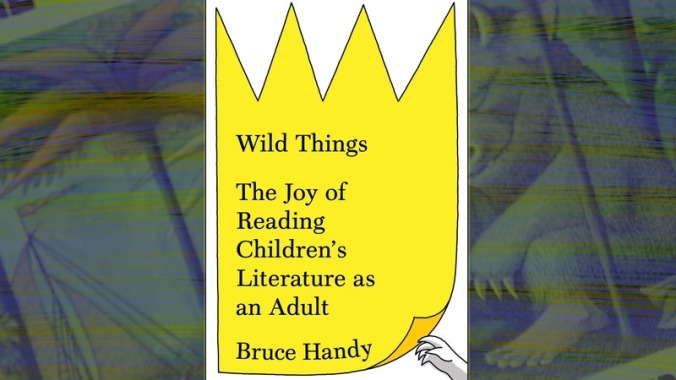Wild Things makes a convincing case for reading children’s books as an adult

In the great green room
There was a telephone
And a red balloon
And a picture of—.
So begins one of the great works of American literature, a children’s book, first published in 1947, that has sold over 48 million copies, with another 800,000 or so annually added to that astronomical total. Following that cliffhanger of an intro, Margaret Wise Brown’s Goodnight Moon unfolds over 30 illustrated pages of rhyming couplets armed with the uncanny ability to lull most anyone, no matter their age, into a soft sleep. Goodnight Moon has been recycled and parodied at Shakespeare-peak levels, and, at its current pace, could soon be read and performed more than the Bard’s entire output (what other book could unite Susan Sarandon, Christopher Walken, and Oderus Urungus, the late lead singer of Gwar?).
Few, much less Margaret Wise Brown, could have foretold the book’s success (an early draft ended with the lines “Goodnight cucumber / Goodnight fly”). A veteran author of some 40-odd children’s books—and now at least a dozen posthumous publications—she died five years after Goodnight Moon’s debut, at 42, while doing the cancan (her last word was “Grand!”). Brown was never fond of kids. “To be a writer for the young,” she said, “one has to love not children but what children love.”
That you don’t have to be a child to be a lover and reader of children’s literature is the conceit of Bruce Handy’s Wild Things, a terrific rumpus of a journey into the world of illustrated and young reader classics that Maurice Sendak grumpily termed “Kiddiebookland,” and Dr. Seuss teasingly called “brat books.” Part historical survey, part collective biography, and part memoir about reading these books as a child and rereading them as a parent, Handy canvasses the past century of American and British kid books to suggest that “children’s literature is every bit as rich and rewarding in its concerns, as honest and stylish in execution, as the best adult literature—and also as complicated, stubborn, contradictory, and mysterious.”
The key word here is mystery, the underlying theme that unites the titles in Handy’s handpicked oeuvre (most everyone will have a bone to pick with the author’s omissions—Where’s Steig? No Dahl, no deal!). From Goodnight Moon to Beverly Cleary’s Klickitat Street series to Little House On The Prairie, children’s literature is at its best when it seeks to help children—and grownups, arguably—make sense of the often nonsensical adult world that surrounds them. Nine-year old Cassie Logan faces down racism in rural Mississippi. A supperless Max journeys to an island filled with wild monsters. An obviously demented cat wearing a hat unleashes unholy hell on poor Sally and her brother.
Early on, it becomes evident where Handy is heading, toward the greatest mystery of all: death. The Tale Of Peter Rabbit, the first in Beatrix Potter’s sequence of timeless, anthropomorphic stories, begins with Peter’s widowed mother recounting the sad episode of Mr. Rabbit ending up in Mr. McGregor’s savory pie. The shocking demise of Narnia’s Aslan prepares young readers for a lifetime of fiction where the hero dies before the final act. Even Goodnight Moon has been interpreted as an allegory on mortality, with its forbidding lines: “Goodnight nobody… And goodnight to the old lady whispering “hush”
Wild Things ends, as it must, with Charlotte’s Web. Even a secondhand reencounter with the ending of E.B. White’s masterpiece through Handy’s rereading might make many readers, still coping with the death of our friendly farmhouse spider, dissolve into sobs. White himself needed 17 takes to record the final scene for the audiobook in 1970 without crying (an anecdote Handy curiously neglects to mention).
Unfortunately, Wild Things never really answers where all this death comes from. Is it rooted in the fantastical grimness of the Brothers Grimm? Does the fact that so many children’s authors remained childless (Brown, Sendak, Seuss, Louisa May Alcott) have something to do with it? The alternative to Charlotte, as Handy makes clear, is not only the imbecilic Dick and Jane, but also the stacks of terrible, horrible, no good, very bad children’s books about death (The Fall Of Freddie The Leaf, anyone?). Perhaps E.B. White understood that the best way to expose children to the possibilities of life is through the impossibility of death—or as his Templeton the rat famously puts it, “Who wants to live forever?”
Purchase Wild Things here, which helps support The A.V. Club.